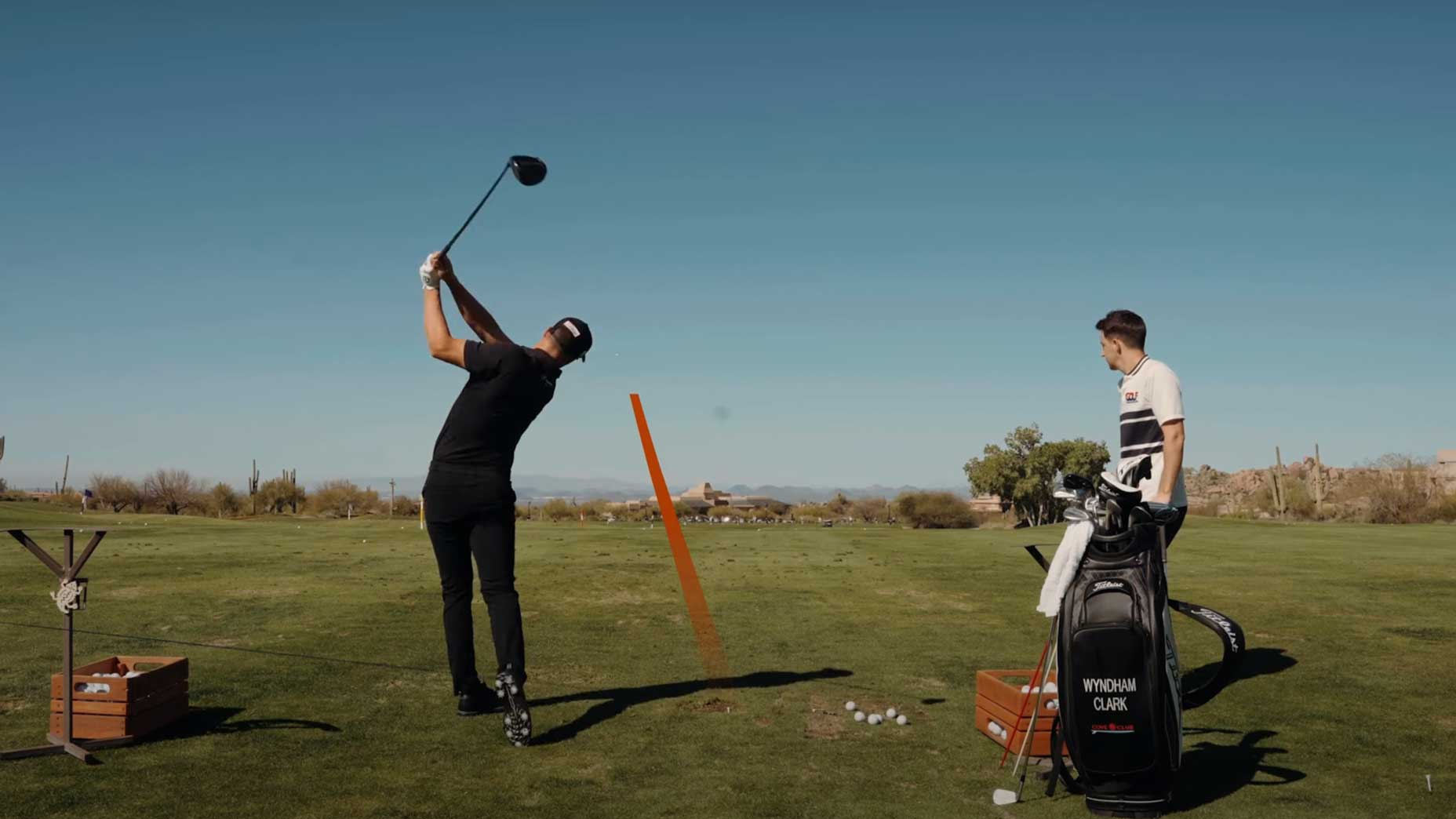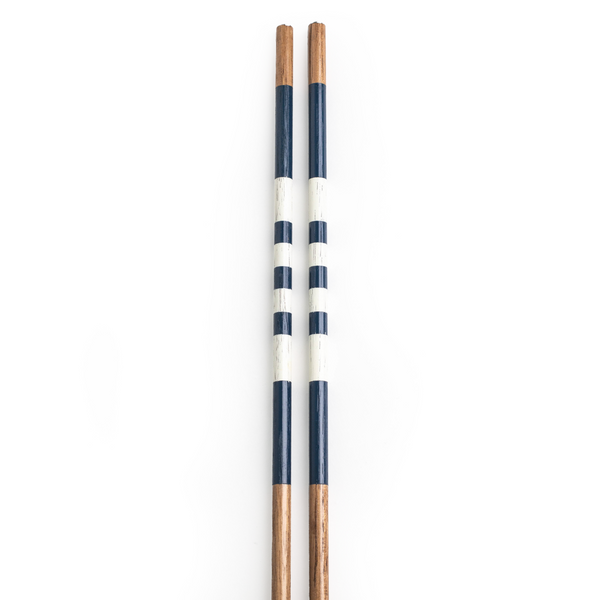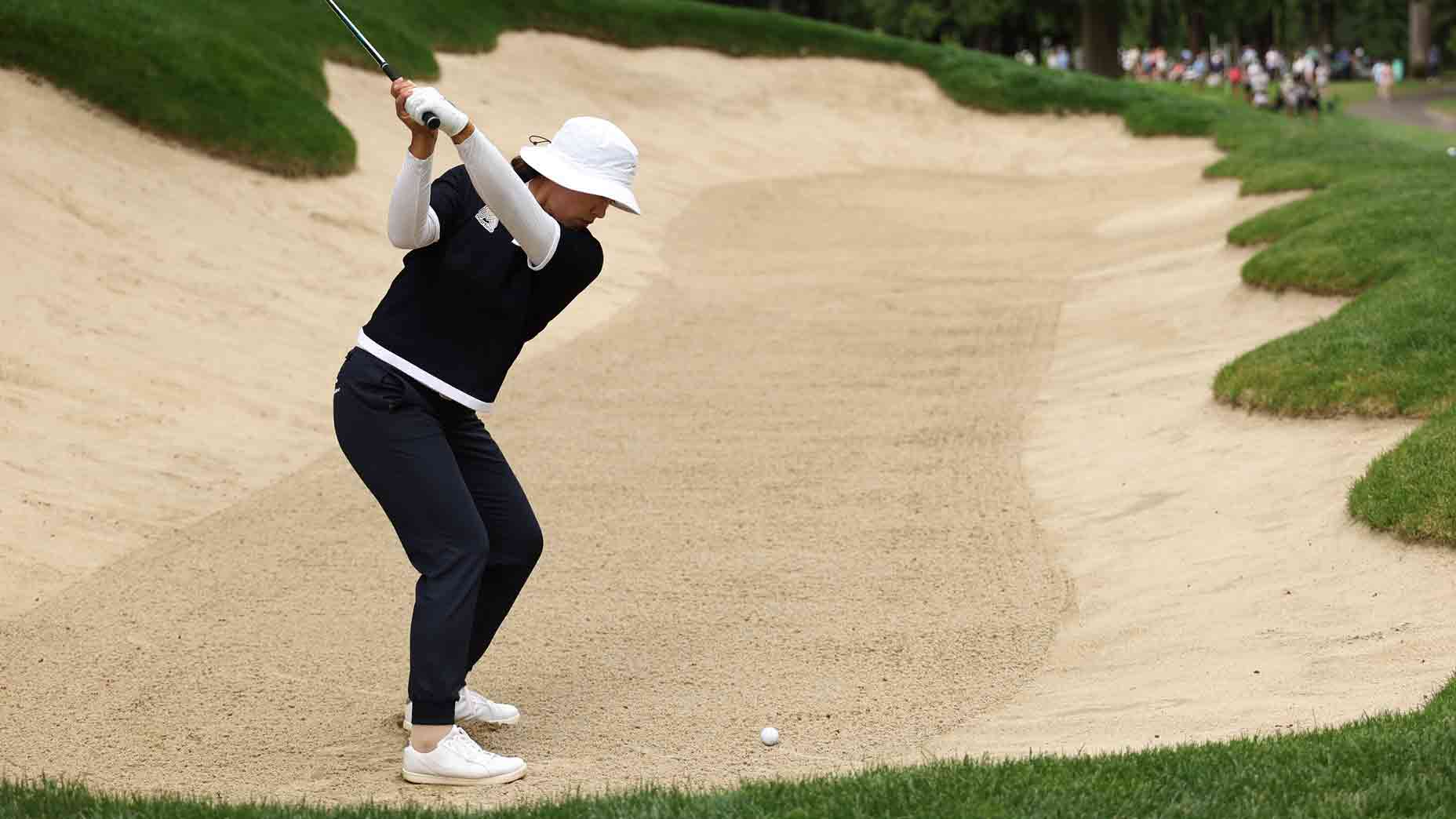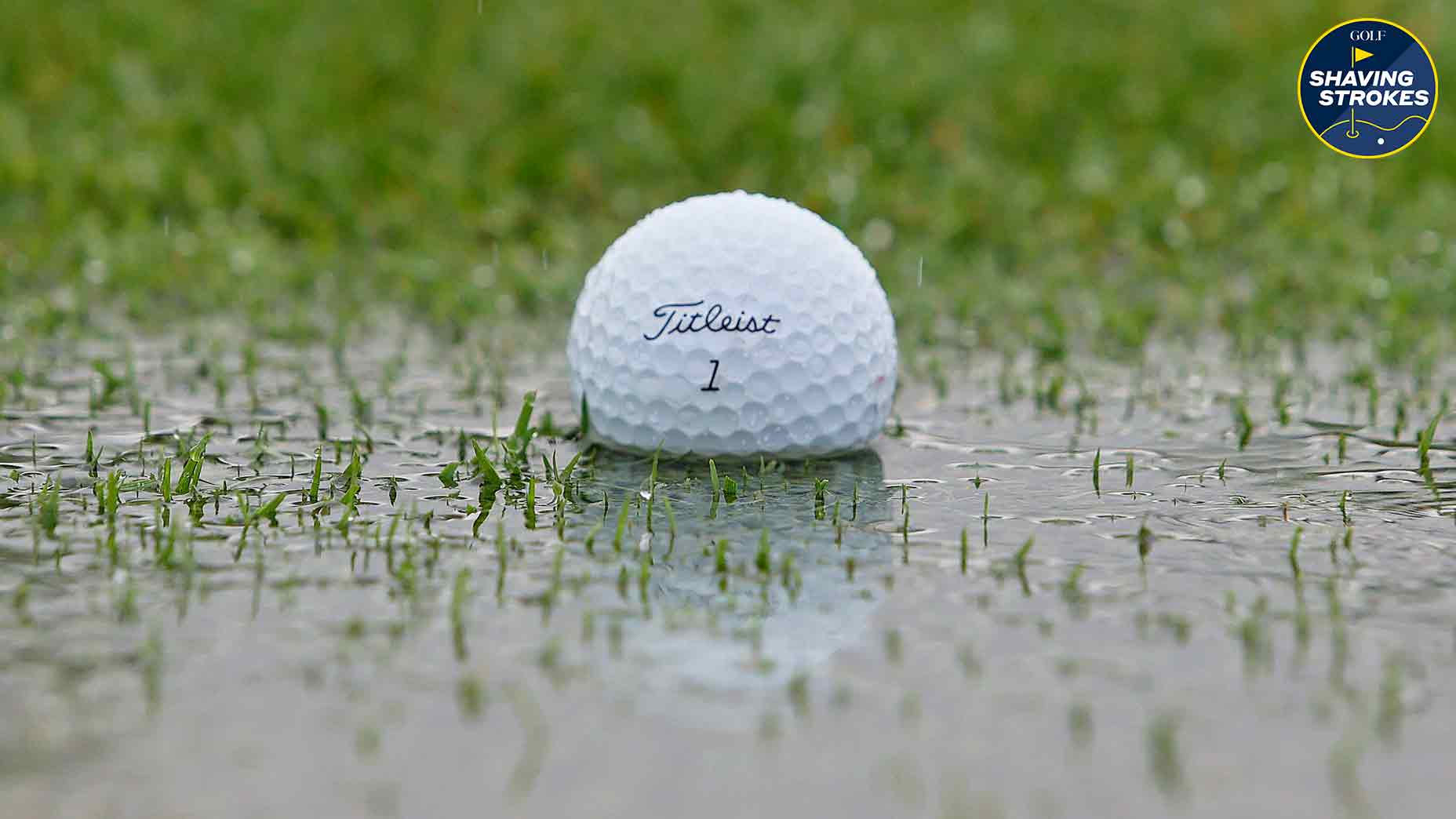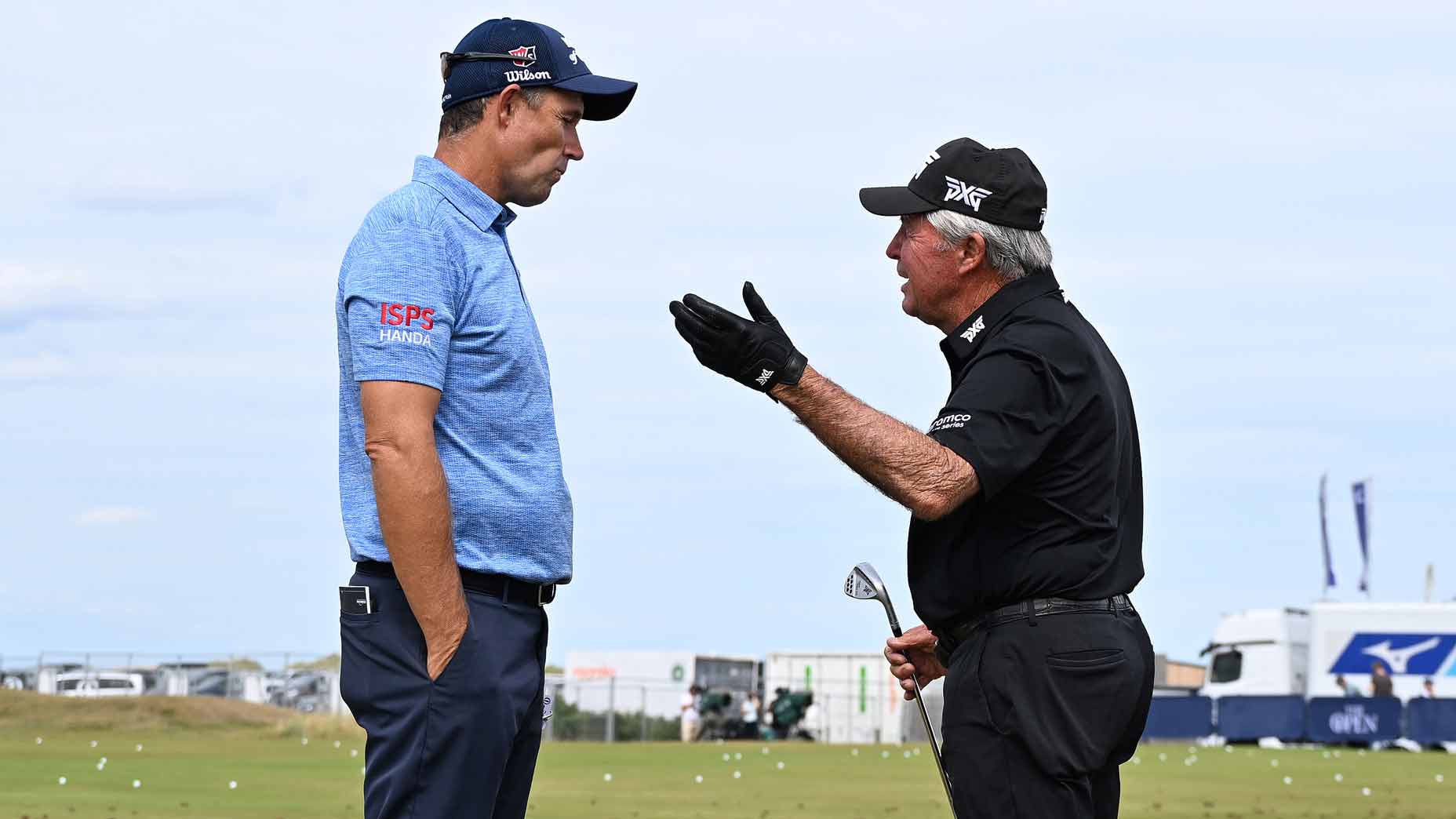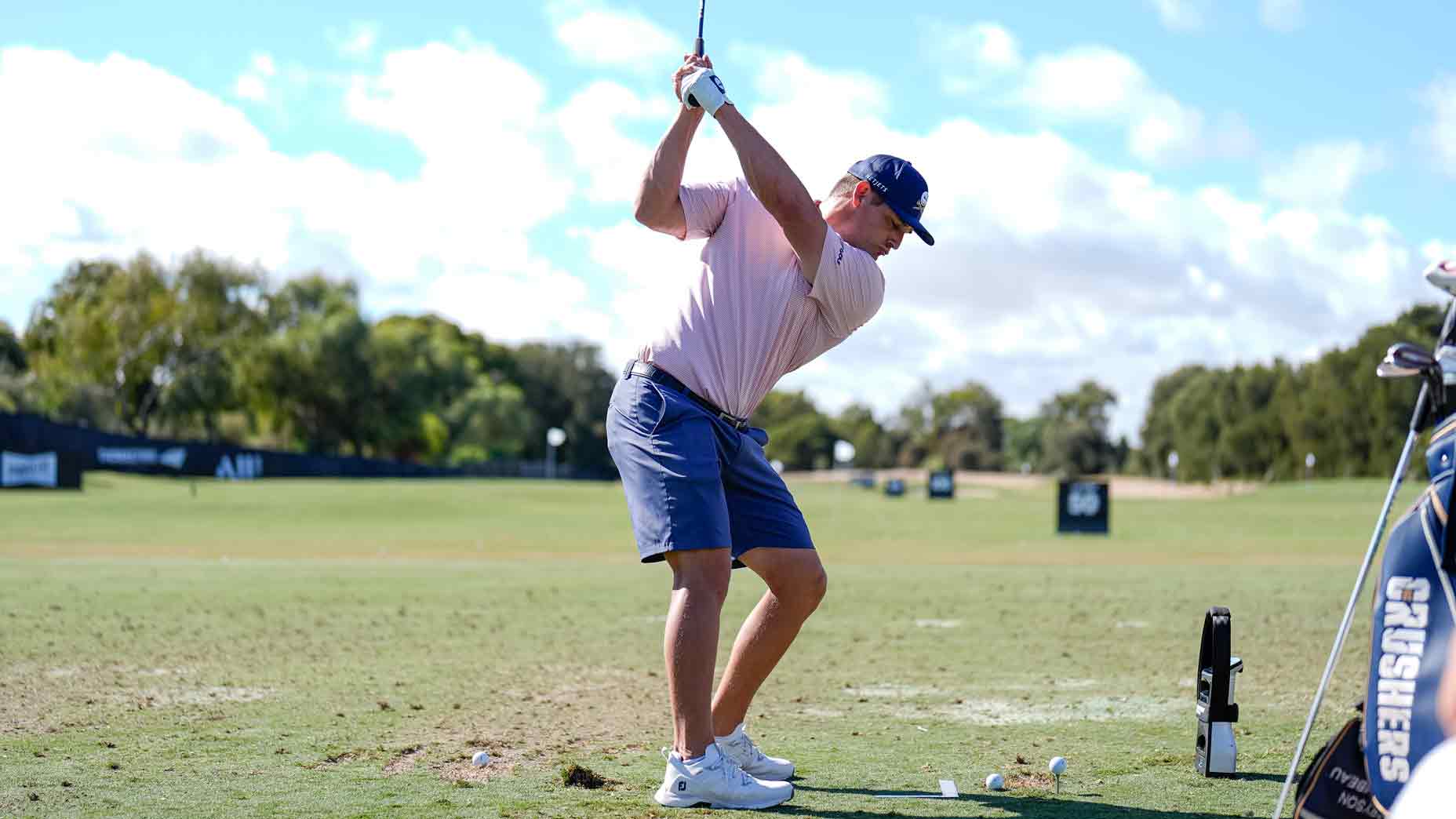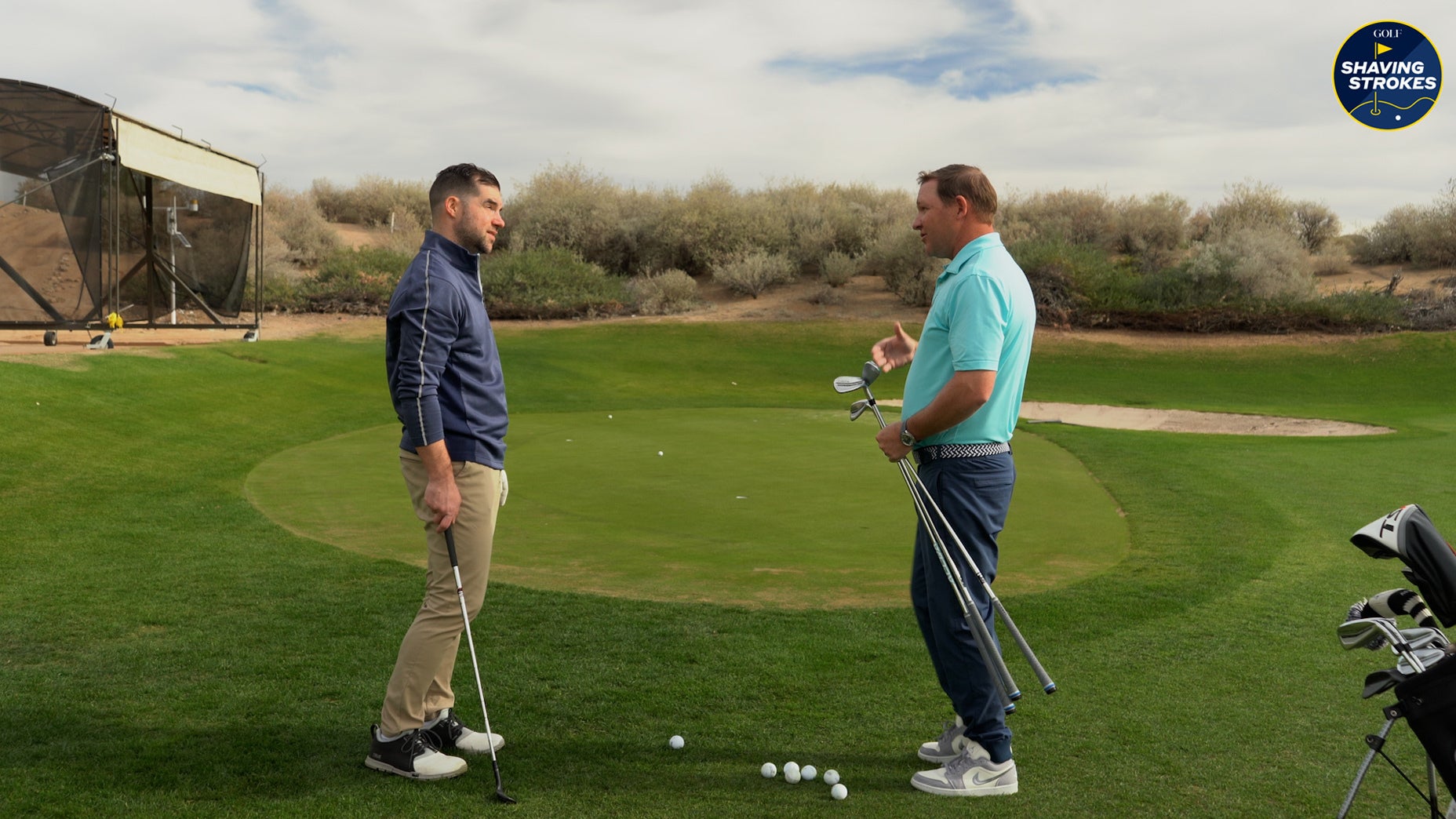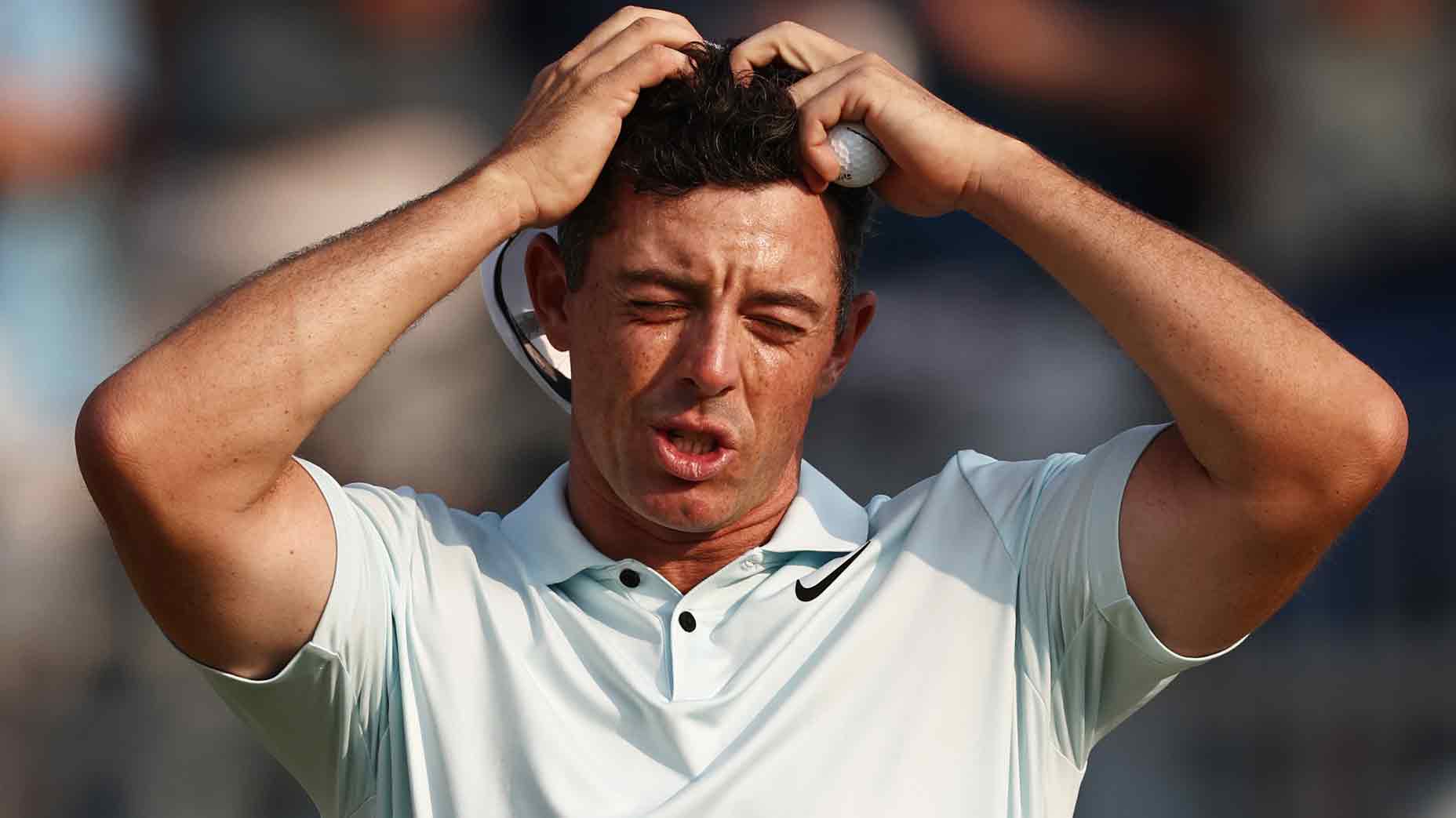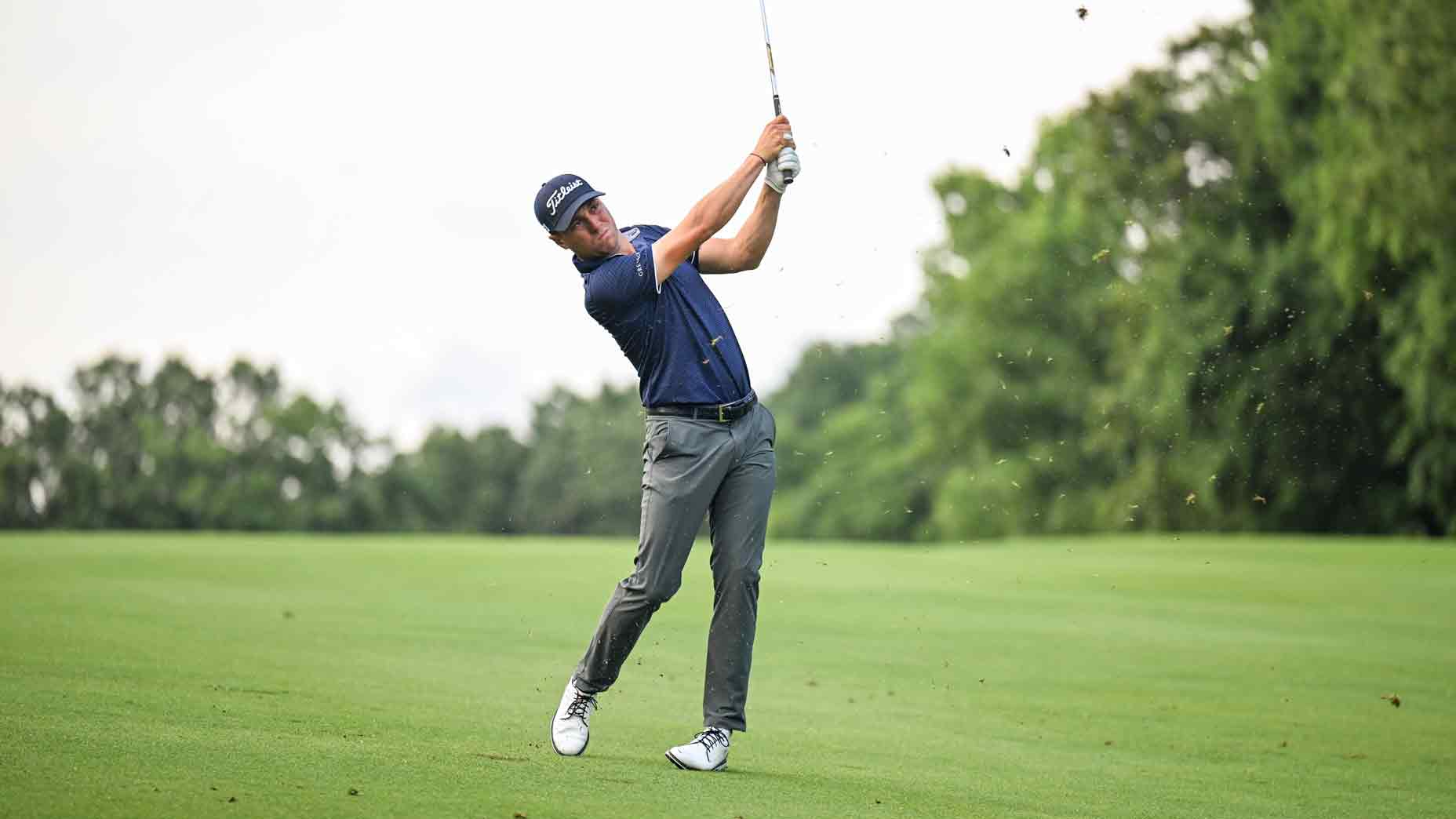7 mistakes you’re making at the range (and how to fix them)
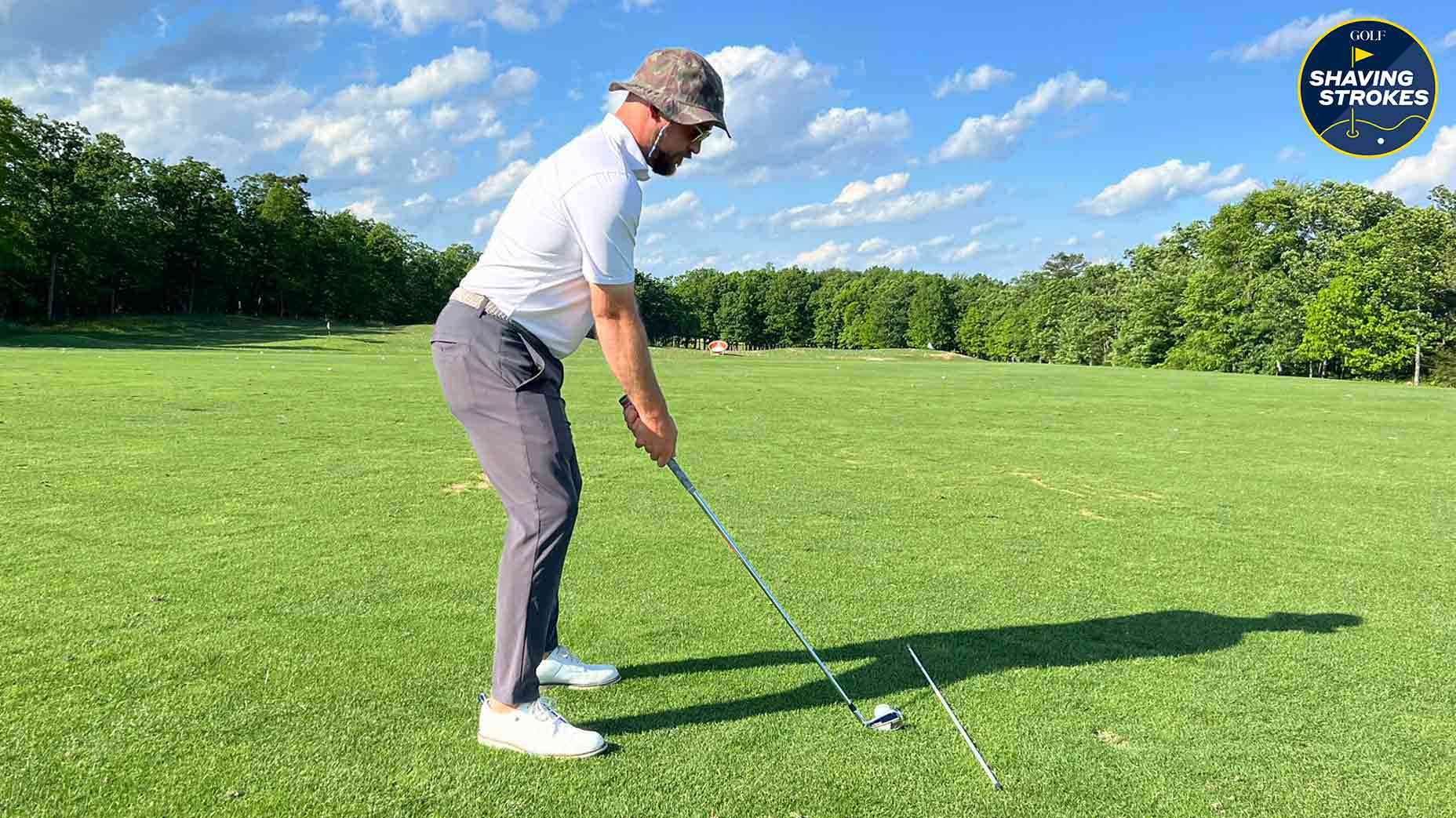
Next time you're at the driving range, avoid these common mistakes.
Image via John Hughes
Welcome to Shaving Strokes, a GOLF.com series in which we’re sharing improvements, learnings and takeaways from amateur golfers just like you — including some of the speed bumps and challenges they faced along the way.
In my nearly 30 years of playing golf, it’s funny how hitting balls at the driving range has changed.
When I first started playing, I’d just whip out my driver and try to bomb balls as far as I could. There wasn’t any intent, nor was there any actual structure to what I was doing, since I was a kid just trying to learn the basics.
As I’ve gotten older and wiser about my game, I’ve adapted my driving range strategies, and now use a more focused practice technique that mimics certain scenarios I might see on the course. I also utilize training aids and other tech that provides me with instant feedback.
While practice is always a good thing, perfect practice is what’s really going to positively impact your golf game — it just took me awhile to understand that.
So instead of just going to the driving range and making the same mistakes — which aren’t leading to improvements — it’s time to tighten things up. With the help of golf teacher John Hughes (who offers up tips below), you can identify seven common practice errors, learn how to overcome them, and start to see the gains you’re looking for.
7 things you’re doing wrong on the driving range (and how to fix them)
I spend a lot of time on the driving range observing players hit balls. Whether they’re warming up before a round, or just practicing for improvement, most amateur golfers look and act the same on the range — and that isn’t necessarily a good thing!
With golf being a game of uncontrollables, there are a few controllables that every player needs to understand. If you can master them, you’ll almost instantly improve your scores.
Unfortunately, most amateurs aren’t doing them — especially not on the driving range.
So what are they? I suggest checking off the following seven items prior to ever taking a shot, meaning they’re totally under your control. And here’s the best part: they aren’t technical, but simple pre-shot improvements that will put you in better position to go low.
1. Using alignment sticks incorrectly
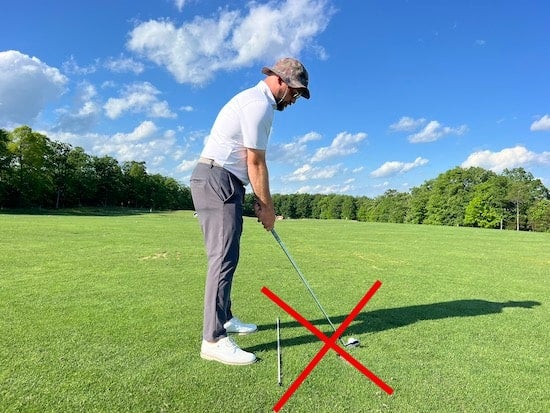
If you ever watch a pro warm up on the driving range, they always have alignment sticks somewhere nearby — and they use them in multiple ways. Most golfers emulate what they see their favorite player doing when they practice, without any knowledge of how the golfer is actually using these simple, yet highly effective training aids.
If using one stick with the ball on one side and the golfer on the other, contrary to what you might believe, the golfer probably isn’t working on alignment. Unfortunately, what most amateurs do is aim the stick at the target and place the ball on the opposite side, which immediately causes you to aim right of your target.
Instead of doing this, try putting the ball on the same side as you, which will help working on both aim and alignment, as well provide an easy motion drill. Just simply place the ball one club head width away from a stick that is directly aimed at your target. Now you’re in the proper alignment position as you work on your drill.
2. You’re standing too far from the golf ball
When you’re too far away from the golf ball, you create a lot of room for the clubface to open and close. The club is hinged at the neck, which creates the opening and closing of the club as you swing back and through the golf ball. The more horizontal your swing, the more the face opens and closes — and the more you must manage to square the clubface at impact.
You’d be surprised how stepping just a quarter to a half-inch closer to the ball will reduce the amount of face rotation in your golf swing, and, in turn, take some unwanted curvature off your ball flight.
3. Your clubface isn’t square towards the target at address

Yes, that’s right. As much as you believe the face of your golf club is perpendicular to your intended target, it’s not! In most cases, the face is closed to your target, regardless of which side of the ball you stand on.
The most basic reason is a simple one — you forget that your body doesn’t hit the ball, the club does. I can’t tell you how many golfers on the driving range aim themselves, particularly their front shoulder, at the target, then adjust the club to their body. This isn’t correct.
4. Not using the leading edge to aim
The leading edge is called the leading edge for a reason — because it leads the club into the ball, in turn, creating the 90-degree angle that you need at address to have any chance of hitting straighter shots.
If you’ve been told to aim the club, not your body, and your club is still closed at address, you’re probably using the top of the club and its lofted face as your aiming device. But doing this actually closes the club.
Using the one-alignment-stick method I mentioned above, you should visually see the leading edge of any club create a 90-degree angle with the stick. When you do, the club’s now square to your target, so you’re ready to place your body into position based upon the club’s position.
5. Bad balance
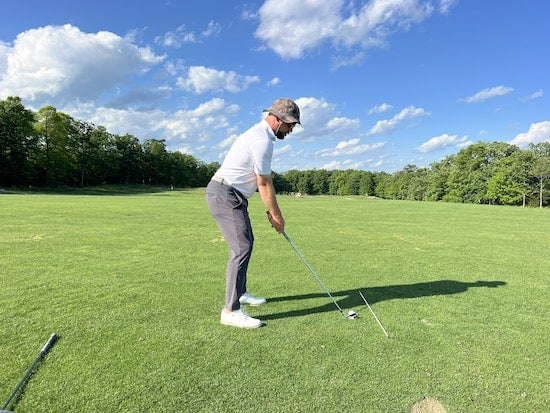
You’re only going to swing the club as fast as your body can balance the movement, so if you’re too far away from the golf ball, you’ll be on your toes at address. This will send your equilibrium into panic mode, attempting to keep you from falling over as you swing.
Ideally, from your feet to your belt, you should feel well balanced, side to side, and from heel to toe.
Having secondary spine tilt is primarily the result of your trail hand being below the lead hand on the handle — which, for most shots, is plenty of tilt. The only time you should exaggerate tilt from the belt up is when using the driver.
6. Ball position doesn’t match the bottom of your swing arc
The No. 1 reason why you hit fat or thin shots is because your club isn’t striking the ball prior to reaching the low point of the swing.
If you’re like most amateur golfers I see on the driving range, chances are you’ve placed the ball further forward in your stance than it needs to be. Remember that the club swings on an arc that isn’t horizontal or perpendicular — it’s at an angle. So as the club reaches the bottom of that arc, it begins to move up and around your front side.
I suggest simplifying your ball position by placing it in the middle of your stance when using mid-to-low irons and wedges. This will help the club make contact with the ball just prior to hitting the ground.
7. Grip position and security
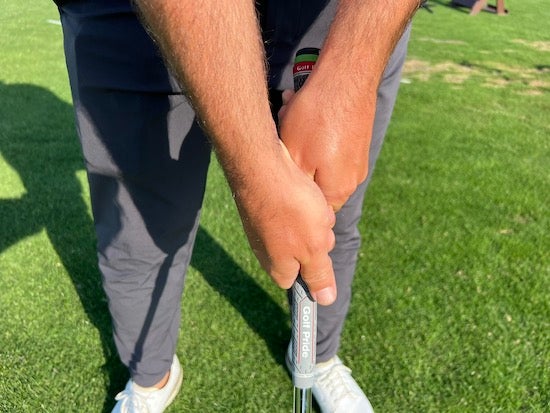
When observing players on the driving range, I either see a lot of poor hand positioning with the top hand over-gripping the club. Let’s first deal with those issues.
First, make a tight fist with either hand and try to make that hand move fast. Now, allow your hand to relax and have it move fast. The looser hand will always move faster. When you’re holding the club with a death grip, there’s no way you’ll hit the ball as far as you could — which is why a good grip position of the top hand is essential to create a more relaxed (but secure) grip.
Now let’s study your arms and hands.
Look at yourself in a full-length mirror and notice the angle that your hands hang from your arms relative to your body. It’s highly unlikely that your hands are parallel or perpendicular to your body, so it’s your job to place your top hand on the club, which will replicate your natural arm hang at impact. This is often described as a neutral grip position — and neutral is slightly different for all golfers, since we’re all built just slightly differently.
To implement a neutral top hand grip, rest the club in the second knuckle of your top hand. Next, close your fingers first, then allow the rest of your hand to wrap and cover the grip, with your thumb on the opposite side of the grip. You’ve just achieved your first neutral grip position, which should add better security of the club during your swing.
The Nautical
$79
View Product

